Wading in the warm waters of the eel-grass shallows is a great way to spend a summer afternoon and catch a nice, juicy crab for dinner.
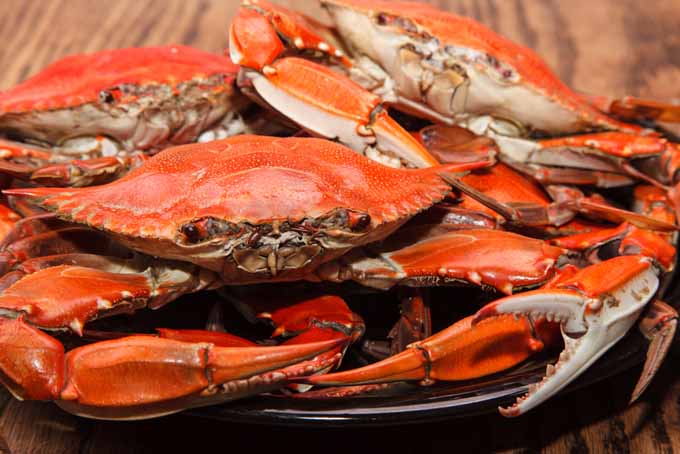
But, if you don’t live near the beach, you can still enjoy their delectable taste by picking some up at your local fish market, or even ordering them online.
In North America, the most popular of these decapod crustaceans for eating on the West Coast are the Dungeness, known for its succulent meat and meaty yield, the snow crab with its sweet, briny flavor, and the Alaska King Crab with its silky texture and sweet leg meat.
On the East Coast, the richly flavored blue crab is most often found on menus, and a soft shell version is available in spring and summer.
If you do harvest your own, please remember to identify them first and return females for the sake of conservation. In Canada, it’s illegal to be in possession of female Dungeness or Red Rock crustaceans, and in the US, it’s illegal to keep any type of sponge crabs (i.e. egg-bearing females).
So, let’s have a look at how to select these delicious crustaceans and clean them, and a few ways to cook them up for your gustatory delight.
How to Buy Crabs
If you have the good fortune of living in a coastal community, find out where the local fisherman’s wharf is and head there for the freshest catch. Whenever possible, buy from local waters when in season.
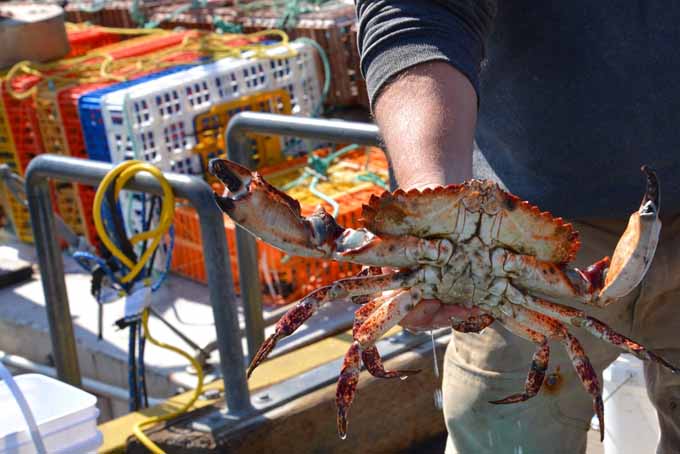
Failing that, look for a fish market or online vendor with a high turnover of their local stock.
Any crustaceans, lobster, or shellfish marketed as live are highly perishable, and once they’ve left their seabed home, they stop eating. And the longer they hang around without eating, the less meat will be found in their shells.
Buy crabs in season, and from local waters if possible. A trans-continental journey means more time from catch to plate, and your selection will likely be a bit less robust and less meaty.
Plus, purchases made at the source will cost less than those coming from thousands of miles away. That being said, we can definitely vouch for the Crab Place (www.crabplace.com) as having very prompt shipping. They offer a great fresh selection, if you should need to purchase from an online source.
Look for active critters that are moving about, and stay away from those that appear to be sluggish. A general guideline is that the meat of a crab is approximately ¼ of its total weight. Held in the hand, it should have a nice heft to indicate that the shell is full of juicy meat, rather than a lightweight one that’s mostly shell.
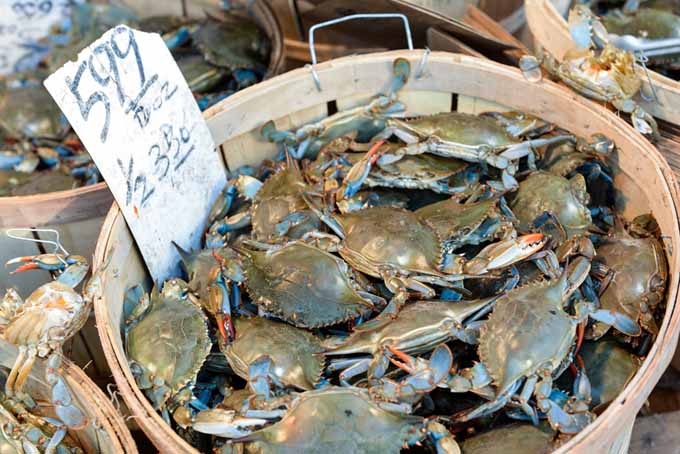
Also check the hygienic environment of the holding tank – you don’t want anything from a tank with murky water or that has algae on the walls, and look to ensure the tank has an aerator for maintaining adequate oxygen levels as well.
Select a female if possible, as they’re likely to be meatier and may even contain roe, for those who enjoy this delicacy. Not all markets allow the sale of females, so ask your fish monger for the best selection possible.
How to Humanely Euthanize
Crabs should be kept alive until just before cooking, to keep the meat as fresh as possible, and free from any toxins contained within the greenish tomalley that’s located in their digestive organ.
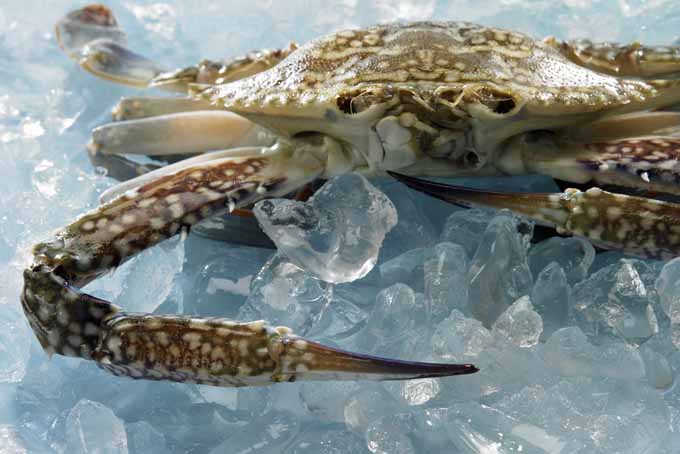
When a crab dies, its stomach quickly begins to release bacteria that was used in the digestive process, and that bacteria helps to begin the decomposition process. As the bacteria enters the meat, it can cause it to become toxic in a short time.
And we don’t want to consume toxic meat of any kind. So, it’s important that live crab stay that way until just before cooking.
Immersing a live crab in boiling water with its stomach intact is okay, as the boiling water will kill the bacteria before it can do any harm. However, if you don’t like the idea of cooking a critter live, you can “do it in” in the following manner.
Before cooking, stun your catch by plunging it into ice water for several minutes. Then flip it on its back before driving the tip of a sharp, narrow knife or ice pick into its “head” – about an inch below the mouth parts and in line with the center of its stomach flap.
This will dispatch it immediately. It can then be cooked as is, or cleaned as outlined in the following section.
Half Backing
Half backing a crab involves cleaving it in half, then removing the guts and gills before cooking. It can then be boiled, grilled or steamed in less time than a whole one, and some claim that the taste is superior, as the meat is cooked without the flavorings of the stomach contents. Here are the steps to half back:
- Flip the crab on its back and quickly kill it (see above for an explanation of how to do this), then cleave it in half, from between its eyes to the middle of its backside.
- Scoop out the guts and gills, then flush well with a hose or kitchen sprayer.
- Cook as per recipe directions, reducing the time by a couple of minutes.
How to Cook Crabs
Boiling
To boil, you’ll need a large pot, salt or sea salt, a set of sturdy tongs, and any seasonings you’d like to add. They can be boiled whole and live, or half backed.

- Add 1/2 cup salt per gallon of water, using enough water to completely cover all the crustaceans in the pot.
- Add a can of beer or a cup of white wine as well as any seasonings you like to add flavor. Try bay leaves, garlic, parsley, tarragon, pepper and salt – or a commercial product like Old Bay or Mrs. Dash will work well too.
- With tongs, grab the crab at the center back of the carapace.
- Submerge the whole crab, ensuring it’s covered with water. Bring to a boil again and cook 17-20 minutes.
- When done, remove from pot and cool in cold water or an ice bath in the sink, to prevent the meat from sticking to the legs.
- To clean, lift the top shell by pulling up from the back. Under running water, remove the spongy stomach and gills, pulling away the thin, crisp membrane. Rinse well, then crack the body in half. Continue rinsing until clean, then crack the legs away or leave in halves.
Steaming
Steaming helps to retain the tasty juices and prevents them from becoming overly saturated with water.
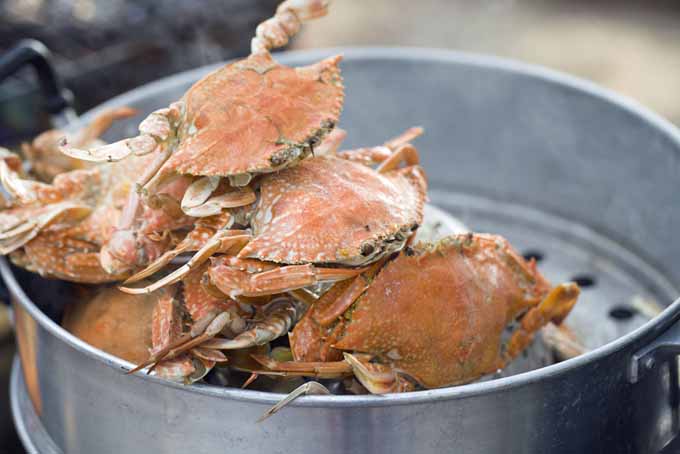
As with boiling, they can be steamed whole but should be dispatched first, or half backed before steaming. You’ll need a pot that has a steamer attachment.
- In a large steamer pot, bring 2-3 inches of salted water to a boil.
- If you plan to use the broth, replace one cup of water with a cup of beer or white wine, two cloves of garlic, a couple of sprigs of parsley, a bay leaf, and a couple of sprigs of tarragon, thyme or savory.
- Place your seafood in a steamer basket or insert and cook for 10-20 minutes, depending on their size.
- Remove from the steamer with tongs, and cool in an ice bath before handling.
Grilling
Crabs should be cleaned before going on the grill.

A quick par-boil or steam to cook them halfway will make the cleaning easier, or you can use the half backing method outlined above.
- Par-boil or steam for 5 minutes, allow them to cool, then clean as outlined in Step 6 of How to Boil a Crab (above).
- Brush both halves with grilling oil, then place them on the grill. A nice grilling oil to use for cooking these crustaceans is olive oil, with some minced garlic and chopped rosemary or thyme added.
- Cook on a medium hot grill (400°F) until cooked through and browned, about 4 minutes per side.
Baking
As with grilled crabs, to bake them they should first be par-boiled or steamed, or cleaned by half backing.
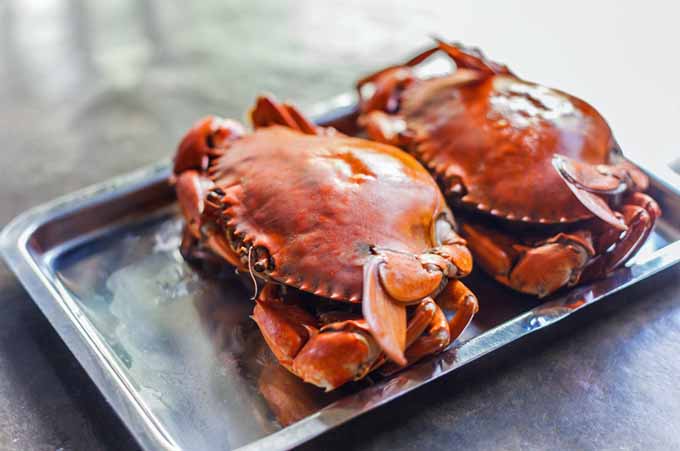
- Brush them with some flavored or herb-infused melted butter, such as butter with garlic, minced ginger and shallots.
- Lay the halves or quarters in a large roasting pan in a single layer and cook in a hot oven (450°F or even 500°F) until they’re cooked through, browned and sizzling, approximately 10 minutes.
Eating
- Start to remove the meat by breaking them in halves or quarters. Most commercially available species can be broken by hand, but for tougher shells you may need to use a cleaver or heavy kitchen knife.
- Pull the legs away from the body with a twist and pull. For larger species, use a nut cracker to help separate them at the joints.
- Starting with the sweet meat of the claws, separate the legs at the knuckles with a twist and pull, or use kitchen shears, and crack the pincers and harder leg joints legs with a nut or lobster cracker. For the smaller, softer legs, twist the shells apart by hand or use kitchen shears to cut the length of the segment.
- Use a small and narrow seafood fork or a bamboo skewer to remove the meat from the cracked claws. Once the large pincer is cleaned, use it to pick out meat from the rest of the legs and body.
- Crack the shell with a light hand to prevent embedding shell shards in the meat and mangling it. If you’ve split the leg shell cleanly, you’ll be able to pull out a solid piece of tender, sweet meat as a reward.
Certain varieties, such as the blue and stoney types, won’t have much meat in their bodies to bother with, but larger ones can have a fair amount.
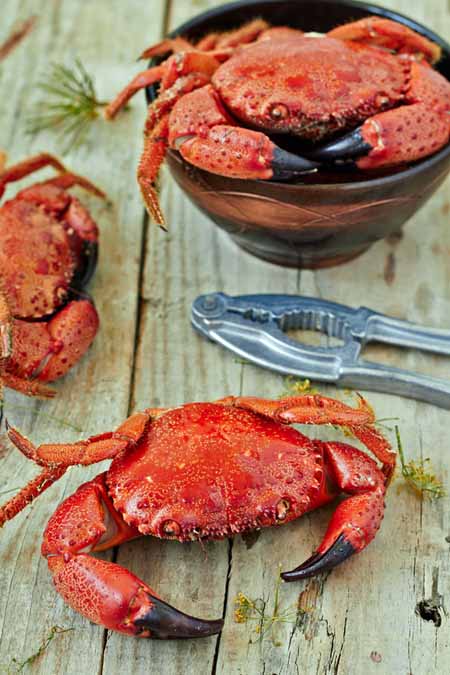
In general, the body meat isn’t as tender or sweet as the claw and leg meat, but it’s still worth getting – especially since it’s fairly easy to remove. Use a small seafood fork, pick, or pincer to tease the meat out from the different body sections.
Crab Festivals
If you’d like to indulge in this tasty treat without having to do any of the leg work yourself, check out some of these popular festivals:
- The Dungeness Crab and Seafood Festival is held in Port Angeles, WA each October.
- The Texas Crab Festival has been ongoing for 30 years now and is held in Crystal Beach, TX each May.
- There’s also a Blue Crab Festival held in Little River, SC every May.
- The Chesapeake Crab and Beer Festival has two dates and two venues – it’s held in June at the inner harbor in Baltimore, MD and in August at the waterfront in National Harbor, MD.
- A bit further north in Nova Scotia, the Louisbourg Crabfest is held at the end of July, while in Newfoundland & Labrador, the Hant’s Harbour Festival is at the end of August.
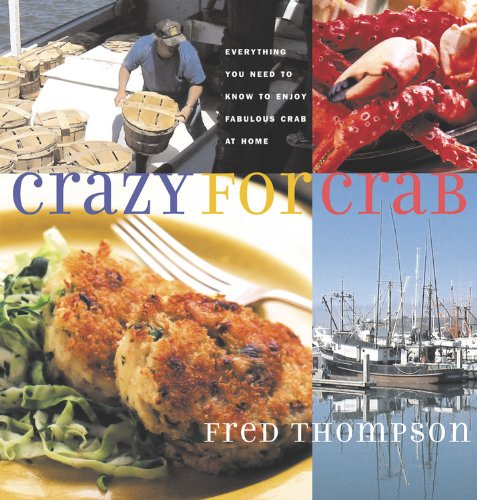
For some great crab recipe ideas, Foodal recommends Fresh Thompson’s Crazy for Crab: Everything You Need to Know to Enjoy Fabulous Crab at Home
Now that you’ve learned the basics of how to select, clean and cook fresh crab, test out your new skills with a couple of recipes, such as Western Crab Cakes With Lemon Aioli and Crab and Mango Stuffed Avocado Halves.
And if you have your own favorite crab dish, drop us a line and share it with us – we’d love to hear from you.
About Lorna Kring
Recently retired as a costume specialist in the TV and film industry, Lorna now enjoys blogging on contemporary lifestyle themes. A bit daft about the garden, she’s particularly obsessed with organic tomatoes and herbs, and delights in breaking bread with family and friends.




Thanks so much for the tips. I especially appreciate the suggestion for the online retailer. Since moving to an inland town, I have not had many chances to enjoy seafood and I truly miss it. Now I can buy some with confidence. Not as good as fresh off the dock, but better than nothing.
Absolutely its better than nothing mecarol, particularly if you’re a seafood lover. It’s amazing what’s available online!
This is very helpful. I am going on a month long vacation to an island with my grandparents, and we love crab. We usually just got to a seafood restaurant to get our fill.
This have given me the inspiration to try to catch or at the very least, buy it locally. This way, we’ll know it’s very fresh and we’ll attempt to cook it and clean it ourselves (at least once).
Plus, we can enjoy a home cooked meal made with love. Thank you so much for the tips and directions!
Glad you liked the post lovelillizzy, sounds like your vacation plans just got a bit more creative. Enjoy the crabbing!
This is a great comprehensive guide. I have only cooked crab a time or two, and could have used this guide the last time, when I caught my own and cooked them. I’m glad I live on the coast, and have the availability of obtaining fresh and live critters, and will be using this guide to refresh my memory, since summer is here!
Thanks for your comments Diane, glad you found the post helpful. Have fun with your summertime adventures!
Thank you for the purchasing tip. I recently saw some for sale at my local supermarket and wasn’t sure if they would be any good. They were not live and now I know that they were most likely not full of much meat.
Glad you found it useful belu214… at the prices, it’s a real drag to get one that’s all shell and hardly any meat.
If I didn’t know any better I’d think this guide was written just for me. 😉 I absolutely love crab, though I have never bought and prepared it myself. This article was very informative, I learned a lot of new things! I also appreciate the online seller link.
One of the biggest things holding me back from preparing crab myself was uncertainty about how to euthanize the crab and prepare it safely afterwards. If I ever get up the confidence to give preparing crab on my own a shot I’ll definitely bring this article up again. Maybe then I can finally make my favorite sushi (crab and avocado) on my own.
It’s not nearly as difficult as you think nightwind. And your sushi will never taste as fresh or as good as when you prepare it yourself! When you’re ready, there’s lots of videos online showing exactly what to do.
I have seen the blue variety on TV but have never eaten one before. The type I’m used to eating is dungeness. There is nothing like fresh, I won’t touch the imitation.
Dungeness is what I’m used to as well, and you’re right. Once you’ve had the real deal, the imitation meat pales in comparison.
Believe it or not, I’ve never had crab, despite growing up around seafood. We were more into lobsters and prawns. I have tried the imitation crab meat but it was completely inedible. It’s just my opinion. but I don’t think fish meat should be stretchy like a rubberband or bounce off the plate if you flick it or not taste of anything at all. That experience did rather put me off actually trying real crab.
From what you’ve said above, I take it that proper cooked crab doesn’t have those problems and I might try it again. Where would you suggest is the best place to try crab, especially if I have to cook it fresh? Help would be really nice.
Thanks for this post! I just moved to Maryland, and I’ve been looking up tips like crazy. This post answered all my questions.
Awesome! Glad to be of help.
Growing up my family wasn’t much for seafood. I think my mom purchased shrimp once. After that the only seafood we had was fish. Being so, I’ve never been one to try recipes with lobster, crab, or shrimp in it because I have no idea how to prepare them. This article has changed that for me. I think I’ll experiment with them a little more often. I think I’ll try the snow crab; it sounds the most appealing to me. It seems a bit time consuming though. All that preparation and there isn’t even that much meat. I guess that’s why my mom stuck to fish instead. I never knew the importance of keeping the crab alive until just when you’re about to cook it. I’m really glad that I do now. I probably would have killed the crab and then stored it for later use. Reading what can happen if you let it decompose a bit makes me want to cringe. I need to save up some money for those festivals.
Preparing crab does take a bit of time and attention Neko. But if you’re a seafood lover, the taste of fresh is incomparable! And I hope you make it to one of the crab festivals in the coming year, they’re a lot of delicious, messy fun!
Thanks for this! I used to love seafood, but ever since I was pregnant with my first I haven’t had a taste for it or the interest in breaking down crab legs or anything like that. Unfortunately, before that happened I turned my husband into a seafood lover. I would love to do something like this for him for father’s day or his birthday this year, but I don’t think I’ll be able to handle it emotionally or physically as I’m pregnant again lol.
He may just have to make his own, or at the very least kill them himself. This is a great resource for learning how to do that as quickly as possible though, and I thank you very much for that!
Glad you enjoyed the post TomiLee13, even if you can’t participate in a crab fest at present!
I am a seafood lover and am from the Chespeake Bay area and this is life for us. We go crabbing, and there are tons of markets that actually steam and fry blue crabs for you. The prices are great considering. My favorite are fried crabs because they are less messy to eat and the inside or the eggs are taken out before frying. I have never really tried to steam or fry these myself…but it is worth a shot. Hopefully it won’t get too messy.
Crab shacks that do the cooking for you is a great way to enjoy them fresh sheebah. And with a little practice, steaming and frying them at home isn’t too messy, and the taste is sooo good it makes it worthwhile!
Thank you for the great tips. I have always been a bit squeamish about preparing crabs. Both them and lobsters are difficult to prepare. Having never liked to run a knife through the head to kill, I was wondering if killing them by freezing would be humane as well. Would you suggest this at all? Would this change the taste of the meat?
Having said that, I really do like crabs. An island dish for us would be curried crabs, as hot (pepper) as we can manage it!
Great informative article!
It can be a difficult task, aquaticneko but I wouldn’t freeze them solid as this will affect the flavor, and I’d be leery of the toxins being released.
However, you can put a live crab or lobster in the freezer for about 20 minutes to put them into a sleep-like torpor… that way they’re not thrashing about when you dispatch them with a knife or drop them in a pot of boiling water. Hope that helps!
I really like to cook with crabs, but freezing them can be tricky, as you said.
When I was babysitting at a family, I always had to cook pasta with crab and tomatoes. So often the frozen seafood would be bad quality and the kids didn’t want to eat it.
Good point vegan93. When crab is fresh the flavor is superb, but it can turn if not handled properly. Thanks for your thoughts.
I am going to have to try the whole using the broth method when I steam them. I have never thought of this, but I am betting that adding a little white wine and garlic makes for a tasty little addition to the dish. I really wish that I lived in an area where we could get crab, or any fish for that matter, at better prices, but alas I am stuck in the middle of nowhere. It is a tasty treat when we get it though, and now I have a new little technique to try, so thank you.
The broth adds a lovely flavor rz, perfect for dunking with a French loaf or crusty rolls… glad you enjoyed the post!
We had Maryland blue crabs last weekend and when we cleaned them a few had a pink spongy lump In them, under the gills, near the back end of the crab. They were about1/3 Inch oval. What was it? And can you eat crabs that have this?
It’s hard to tell without a picture Mary, but it could be a few things. Sometimes the fat of female crabs can turn pink after cooking, the roe or eggs are usually orange but can take on a pink hue, and Maryland blue crabs can also be host to the (pink) Nemertean worm which usually preys on the eggs but can also be found in the gills. The meat should be fine, but if you’re unsure check with your local fisheries department. Hope that helps.
Life Long Maryland resident here. I remember going out in the marshes on the weekends and catching half to a full bushel by myself with just a line and some chicken. Those days are gone. The entire family eats Maryland Blue Crabs at least 3 times a month from June to Late October into November (the best crabs are late in the season…when they start to bury themselves in the mud). I have to disagree with you about catching and eating the female crabs. Yes, the males and females do taste very different, but we need to leave the females in the bay in order to repopulate the species. If we keep eating all the females, then we will lose the ability to eat any crabs at all. I will never touch a female crab due to this reason.